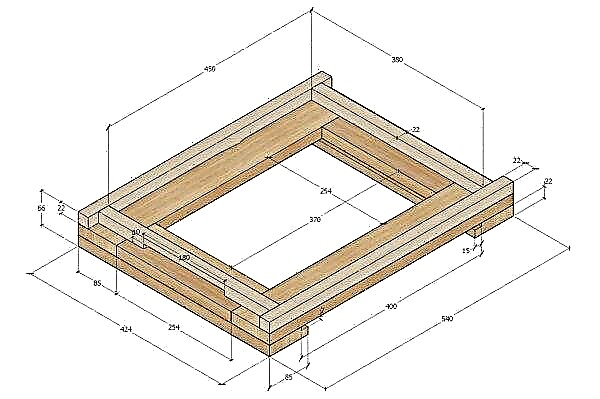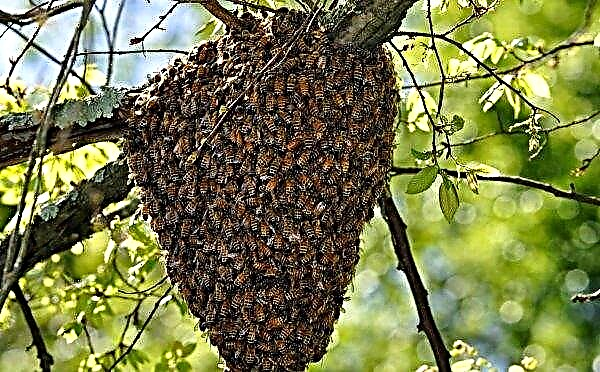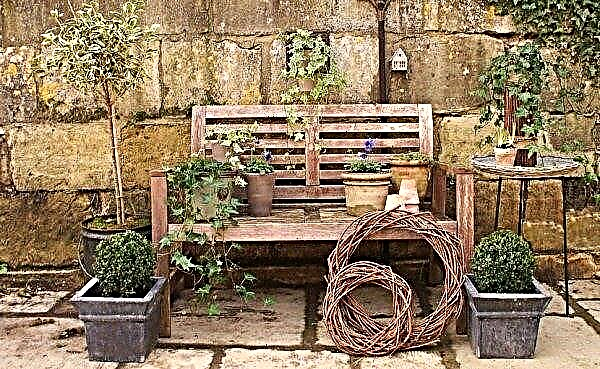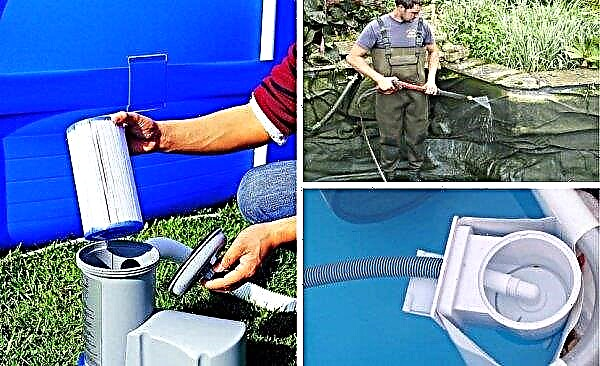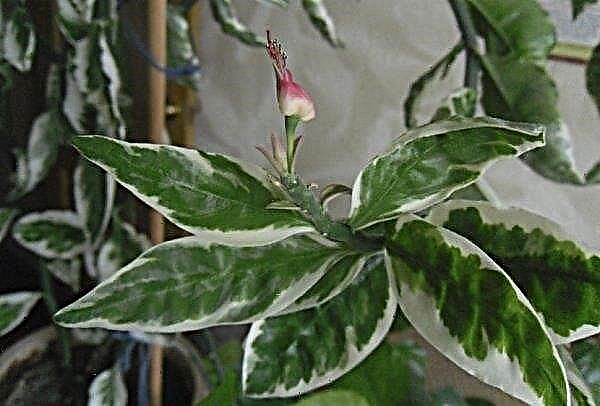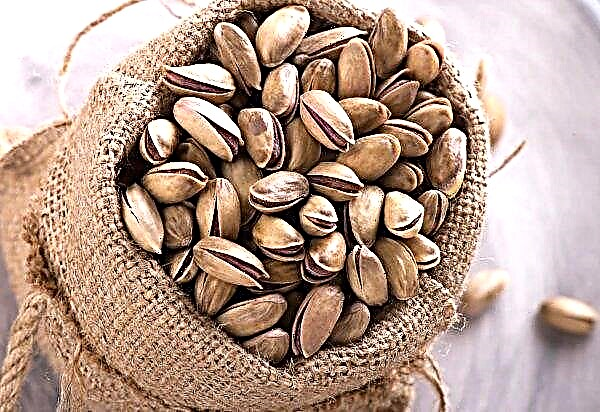To consume vegetables of our own production, you do not always need to acquire a garden. Urban residents can grow tomatoes on a regular balcony. For this, it is necessary to take into account the features of the equipment of the room and sowing seeds, as well as to understand the intricacies of caring for plants.
Is it possible to grow tomatoes on the balcony
Tomatoes are a great choice for growing on the balcony. With a competent approach to planting and maintenance, you can harvest a good crop. To do this, you need to determine the variety, carry out the necessary preparatory steps, sow the seeds, transplant seedlings and properly care for the tomatoes until the fruits ripen.
Did you know? Keeping a mini garden at home is popular in Scandinavian countries. For example, in Sweden you can find areas planted with vegetables not only on balconies, but also near apartment buildings and even on roofs.
The best varieties for growing on the balcony
For growing tomatoes in a home environment, there are varieties that are also called "balcony". They are mainly characterized by small fruits. Their list includes tomato seeds under the following names:
Preparatory Activities
Before sowing seeds, it is necessary to perform preparatory steps. First of all, you need to equip a balcony. After that, you can begin to prepare the container, soil and seeds.
Balcony preparation
An ideal room for growing tomatoes would be a balcony with windows that open to the southeast or southwest. You can not allow both intense heat and stagnation of air, and drafts. For this reason, for home plantings of tomatoes a glazed balcony is suitable, which should be regularly ventilated. However, the non-glazed version of the room is also suitable for growing.
Did you know? Cherry tomatoes were bred at the beginning of the 19th century in Latin America. This variety has gained popularity among vegetable growers due to its useful qualities, ease of use and the possibility of growing at home.
Pot selection
In preparation for growing tomatoes, it is important to determine what to grow seedlings. The shape of the containers should be cylindrical, while the main thing is that the root system should have enough space for growth. Small containers are suitable for sowing seeds:
- pots;
- tetrapaks;
- glasses;
- disposable cups;
- plastic bottles.
 For further transplantation of seedlings, containers with a volume of 4-6 liters are suitable. A good option is to grow in plastic bottles, the standard sizes of which are great for tomato seedlings.
For further transplantation of seedlings, containers with a volume of 4-6 liters are suitable. A good option is to grow in plastic bottles, the standard sizes of which are great for tomato seedlings.Important! It is unacceptable to grow tomatoes in rooms where daylight hours are less than 3 hours.
Mixing
For home growing tomatoes, land from the garden can be dangerous, because it will most likely contain harmful organisms. It is best to purchase a soil mixture in a specialized store. If you want to prepare the soil yourself, you can mix turf, humus and peat. The last component is needed for loosening the earth, it is also replaced with sawdust. As a top dressing, experienced vegetable growers are advised to use nitrate, ash, superphosphate or potassium sulfate.
Seed treatment
First of all, the seeds need to be checked for quality. To do this, they are filled with water and left for 40 minutes. You can only use the material that has fallen to the bottom of the tank for sowing. After checking, it is necessary to conduct a two-stage seed treatment. First you need to prepare a weak solution of potassium permanganate. In it, the seed is soaked for 20 minutes. Next, the seeds are treated with a growth stimulator. For these purposes, you can use the popular drug "Epin" or any other suitable remedy. The time during which the seeds must be left in the stimulator is about 10 hours. After proper treatment, the seeds are wrapped in a damp cloth and placed in a warm place. In this state, they should be from 48 to 72 hours. A sign of successful preparation of material for sowing is the appearance of sprouts.
The time during which the seeds must be left in the stimulator is about 10 hours. After proper treatment, the seeds are wrapped in a damp cloth and placed in a warm place. In this state, they should be from 48 to 72 hours. A sign of successful preparation of material for sowing is the appearance of sprouts.
Sowing and seedling care
Containers need to be filled with soil. Seeds with sprouts are placed in the ground to a depth of 1 cm. When using containers of small diameter, 1-2 seeds are placed in a container. If boxes have been selected for germination, a distance of at least 3 cm must be maintained between the seed. Each container must be closed with glass, cloth or film and placed in a warm place in which the temperature will be + 22–25 ° С during the day and + 15– 17 ° C at night.
Seedlings need to provide a full daylight hours. If this can not be done naturally, you need to purchase special lamps. You need to water the seedlings with settled water once every 4–5 days.
Seedling transplant technology
When the sprouts reach a height of 7-10 cm and have 2-3 true leaves, they should be transplanted into large containers. Perform the transplant according to the following instructions:
- Fill the large capacity where the plant is to be transplanted with soil mixture at 3/4 level.
- Make a small hole in it and pour water at room temperature.
- Moisten the soil with seedlings.
- Turn the container over and lightly tap on its bottom.
- Carefully remove the seedling and place in a large container.
- Sprinkle the tomato with soil to the tops of the leaves.
- Leave the seedlings in a warm place until rooting.

Tomato Care
Further care for tomatoes consists in the formation of the right microclimate, top dressing, watering, pollination, loosening the soil and pinching.
Microclimate
Daytime temperatures should be kept at + 22–25 ° С. At night, the thermometer should not fall below +13 ° C. Humidity must be maintained at 60–65%. Lighting should be sufficient to maintain daylight hours. When using additional lamps, do not leave them turned on at night.
Fertilizers and watering
Top dressing should be carried out starting from the moment when the root system has successfully consolidated and expanded. The frequency of fertilizer is not more than 1 time in 1-1.5 weeks. It is best to use nitrogen-based products and mineral supplements. Watering tomatoes in balcony conditions is necessary only with warm, settled water. The soil is moistened once every 3 days, while only watering the soil is necessary, being careful not to get water on the tops.
Watering tomatoes in balcony conditions is necessary only with warm, settled water. The soil is moistened once every 3 days, while only watering the soil is necessary, being careful not to get water on the tops.
Important! Watering too often can harm tomatoes.
Pollination
Natural pollination in balcony conditions is impossible, so every day you need to shake off the bud, on which there is an ovary. The procedure must be repeated 2 times a day.
Cultivation of the earth
Loosening the earth is best done after irrigation. Its optimal depth is up to 5 cm.
Stepson
Pasynkovka must be carried out as the growth of unnecessary shoots. Stepsons are removed manually or with a garden knife. You need to leave 0.5 cm from the shoots. It is also necessary to rid the tomatoes of dried or yellow leaves.
Tomato Diseases
Balcony tomatoes, like their garden counterparts, are susceptible to the development of infectious diseases and the attack of pests. Among the most common, late blight, whitefly, spider mite can be distinguished. For the specific treatment of each of the scourges you need to use different means, however, there are general recommendations:
- affected areas must be removed;
- healthy plants are sprayed with special preparations.
For prevention, you must adhere to the following rules:
- the microclimate must be correct, critical deviations in the direction of increasing or decreasing humidity, temperature and lighting are unacceptable;
- it is necessary to adhere to the rules of irrigation, not to overmoisten and not to overdry the soil;
- carry out preventive spraying.

Features of growing on an unglazed balcony
Growing tomatoes on an unglazed balcony should be carried out taking into account some features. So, planting is best done in early July, while in a glazed room it is performed in early May. On cool nights, tomatoes should be brought into a warm room. In addition, a permanent place of their maintenance should be protected from direct exposure to wind and the aggressive influence of sunlight.
To grow tomatoes in a balcony room, both glazed and open, is not difficult. It is important to choose the appropriate seedlings, to properly plant and transplant tomatoes, as well as to properly care for them. Following all these rules will lead to a rich harvest without leaving your home.

